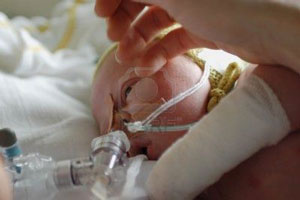Texas Parents File $27 Million Lawsuit over Brain Damage at Birth
The parents of a Texas boy who was injured by perinatal asphyxia have filed a birth injury lawsuit against the hospitals and doctors who delivered and treated him. They blame the medical staff for breaching numerous standards of care, leading to the child’s severe and permanent brain damage at birth.
The parents filed the medical malpractice lawsuit in the United States District Court for the District of Puerto Rico on August 19, 2015. Their complaint names Hospital Buen Samaritano and Hospital de la Concepcion, and Dr. Mabel M. Bonilla, Dr. Laura S. Puig Marrero, and Dr. Miguel Suarez Villamil among the defendants.
Delivery complications end in brain damage
Early in the morning on September 27, 2015, the plaintiff mother visited defendant Dr. Mabel Bonilla, her obstetrician. The plaintiff was 36 weeks pregnant and was feeling pelvic pressure and secretions. Though she was having no contractions and her water had not yet broken, the exam showed that her cervix was preparing to give birth. The doctor sent her to Hospital Buen Samartiano, where she was admitted for an induction of labor.
The baby was born late that day. He underwent a very traumatic delivery and was born in a severely depressed state. His skin was blue from lack of circulation, pale, flaccid, and not responding to stimuli. He was in critical condition and required specialized care.
According to the complaint, the hospital’s records are an unreliable reflection of the actual treatment and monitoring the plaintiff mother and child received. It further alleges that full and consistent copies have not been provided and that notes have been doctored.
Two hospitals potentially liable for birth injuries
Based on the plaintiff mother’s recollection, she delivered the baby’s head but his body did not follow- an indication of shoulder dystocia. His heart rate began to show signs of depression so the doctor tried many maneuvers, including the vacuum, before the baby was finally delivered. At birth, the child had no color or response.
After receiving treatment for perinatal asphyxia in the Intensive Care nursery, the boy was placed on a mechanical ventilator. Soon after, he was transferred by ambulance to the NICU of Hospital La Concepcion, where he arrived with gray skin and showed other signs of severe distress. There he was diagnosed with respiratory failure, clinical sepsis, and perinatal asphyxia.
By the next day, the child was suffering from seizures. He remained in the hospital until October 22, 2012. In January 2013, the boy was diagnosed with multicystic leukoencephalopathy, in which the white matter of the brain contains many cysts, and microcephaly, or an abnormally small head. He is currently suffering from physical, motor, and developmental delays, seizures, visual impairment, hearing loss, feeding problems, and more.
Family seeks millions in compensation for brain damage at birth
The birth injury lawsuit alleges that the hospital and doctors are liable for failing to properly monitor and respond to the child’s birth. As a result, the parents seek compensation on behalf of themselves and their child.
For the injured child, his parents request compensation of $10 million for severe physical and mental disabilities, emotional and mental distress, depression, and other damages. They request an additional $10 million for his medical costs, transportation, and other related expenses.
Additionally, the mother requests at least $5 million for her mental and emotional suffering and severe depression plus another $1 million for her loss of income. The father requests at least $1 million for his suffering.
- Medline Plus, Skin discoloration – Bluish, https://www.nlm.nih.gov/medlineplus/ency/article/003215.htm
- Pacer Monitor, Cordero Paredes, et al. v. Hospital Buen Samaritano, et al., https://www.pacermonitor.com/public/case/9101831/Cordero_Paredes_et_al_v_Hospital_Buen_Samaritano_et_al
- Johns Hopkins Children’s Center, Perinatal Asphyxia, http://www.hopkinschildrens.org/perinatal-asphyxia.aspx



 Resources
Resources
 Resources
Resources
